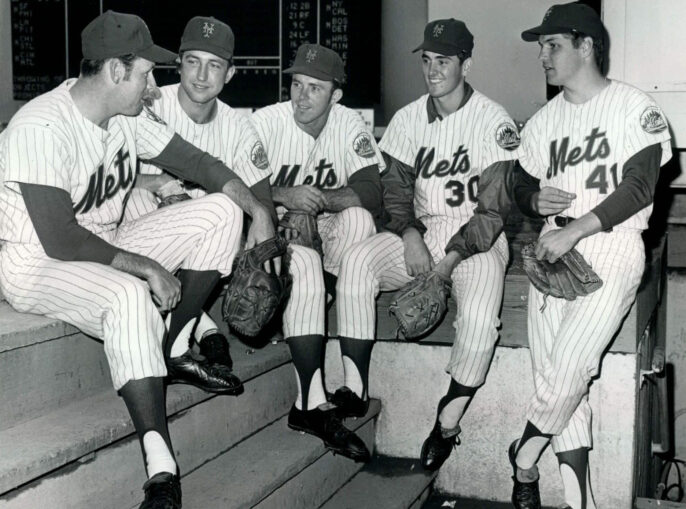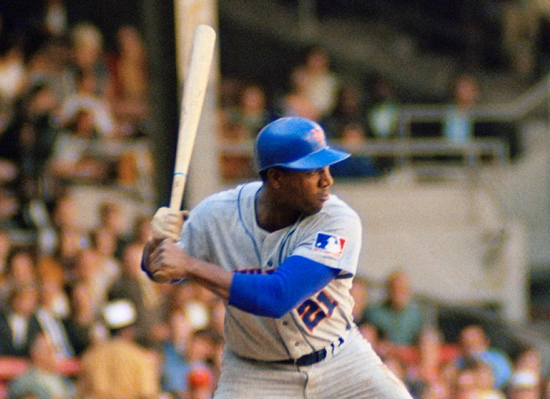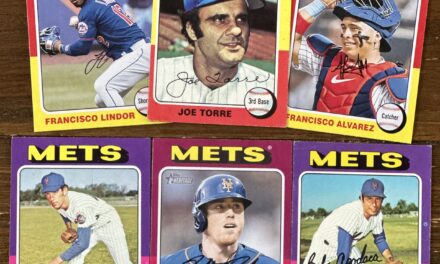
The 40th Major League All-Star Game took place on July 23, 1969, at Robert F. Kennedy Memorial Stadium in Washington D.C. The game was played on a Wednesday afternoon after originally scheduled for the evening before, but heavy rains forced a postponement. It is, to this day, the last All-Star game to be played in the afternoon in the Eastern time zone. The National League defeated the American League 9-3.
The New York Mets entered the All-Star break with a record of 53-39, good for second place in the newly formed National League East, five games behind the first place Chicago Cubs. The Mets were a hot team going into the break, compiling a 13-5 record in the 18 games before the Mid-Summer Classic. During this streak, the Mets won seven in a row between July 2-9. New York ended the first half with a doubleheader split versus the Montreal Expos on July 20.
Three Mets were selected to play in the 1969 All-Star Game: Cleon Jones, Jerry Koosman and Tom Seaver. It was the second straight year the Mets sent three players to the game. Seaver and Koosman were joined by starting catcher Jerry Grote in the 1968 renewal.
Jerry Koosman
Left-hand pitcher Jerry Koosman was in his third season as a Met starter in 1969. The 26-year-old was having a solid start to his campaign but only had a record of 5-5 through his first 13 starts. He was the victim of poor run support in those games as he only gave up 18 earned runs. In 10 straight starts between April 23 and June 27, Koosman pitched through a stretch where he allowed two runs or fewer, yet he managed to earn the win in only half of those games.
His All-Star selection was no doubt cemented by his last three starts made before the break. He faced the Cubs once and Expos twice and in each case, pitched a complete game victory to boost his record to 8-5 with a 1.96 ERA. And indeed, National League All-Star manager Red Schoendienst selected Koosman as one of the eight reserve pitchers behind starter Steve Carlton.
It was the second straight year Koosman was selected to the All-Star game. He earned a save in the 1968 game by pitching only a third of an inning. He struck out Carl Yastrzemski to end the game and preserve a 1-0 NL win.
In the 1969 game, Koosman pitched 1.2 innings (the seventh and first two outs of the eighth) allowing only one hit.
Jerry Koosman finished the 1969 season with a 17-9 record. The 17 wins represented his third highest in his 12-year career with the Mets. He won 21 games in 1976 and 18 games in 1968. The 1969 All-Star game was Koosman’s last appearance in the Mid-Summer Classic.

Cleon Jones
Cleon Jones made his only appearance in an All-Star Game in 1969. He was in his fourth full season as a member of the New York Mets having had brief appearances in Flushing in 1963 and 1965.
The 26-year-old outfielder had a strong spring training in 1966 and came north as the starting center-fielder. Jones had a good first full year batting .275 with eight home runs, 57 RBIs and sixteen stolen bases and finished tied for fourth in Rookie-of-the-Year voting.
Jones slumped in 1967, batting only .246 and shared center field duties with Larry Stahl. After the season was over, the Mets acquired former Gold-Glove center-fielder Tommie Agee from the Chicago White Sox. Agee and Jones were childhood friends. Cleon was moved to left-field prior to the 1968 season as a result of this trade.
1968 started slowly for Jones as he was barely hitting over .200 as late as the middle of May. From there, however, he went on a tear steadily raising his batting average. He finished hitting .297 with 14 HRs and 55 RBIs. Jones’ .297 BA was sixth best in the National League. His second half hot streak in 1968 would portend his All-Star 1969 season.
Cleon Jones was about as hot as a player can be in the first half of the 1969 season. Jones batted .341 with ten home runs and 56 RBIs in the first half of 1969 and was rightly voted as a starter to the All-Star Game. He joined fellow outfielders Matty Alou and Hank Aaron to form a formidable threesome. Schoendienst had Jones bat sixth in the line-up and he responded by going two for four with two runs scored in the NL victory.
Jones went on to become the hitting star of the Mets finishing the season with a team-high BA of .340, the highest mark in Jones’ career. The .340 BA was third best in the NL in 1969 trailing only Pete Rose (.348) and Roberto Clemente (.345).
Tom Seaver
Tom Seaver had an excellent start to his 1969 season. Tom Terrific went 14-5 in the first half with a 2.85 ERA in 22 starts. What was remarkable about Seaver’s first half was a stretch between April 30 and July 9. During that near two-and-a-month span, he went 13-1 with one no-decision, a remarkable achievement. He was chosen for his third All-Star games in 1969. Red Schoendienst decided not to use Seaver in the game.
Seaver, 24 years old in 1969, was in his third year as a New York Met. He debuted in 1967 and pitched to a respectable 16-13 and to a more than respectable 2.76 ERA. He made the All-Star team as a rookie and was named NL Rookie-of-the-Year for the 1967 season.
Seaver also won 16 games in 1968 but pitched to a 2.20 ERA, a half-a-run lower than his rookie season. He made the All-Star game once again in his sophomore year. 1968 was also significant in that it was the first of nine consecutive seasons that Seaver struck out over 200 batters.
The Franchise, as he became to be known, finished his terrific 1969 campaign with 10 straight wins on route to a 25-7 record and a 2.21 ERA. He led the NL in wins and in hits allowed per nine innings with only 6.7. Seaver won the first of three Cy Young Award in 1969 and finished a close second to Willie McCovey for the league’s Most Valuable Player. Seaver was also named Sports Illustrated magazine’s Sportsman of the Year at the close of 1969.
The three Mets who made the 1969 All-Star game are all members of the Mets Hall of Fame. Seaver was inducted in 1988, Koosman in 1989 and Jones in 1991. Of course, Seaver was named to the Baseball Hall of Fame on January 7, 1992, receiving 98.84% of the baseball writer’s votes.















